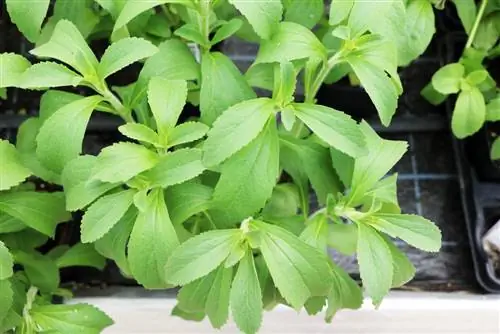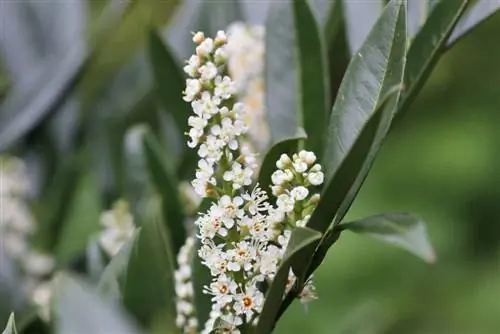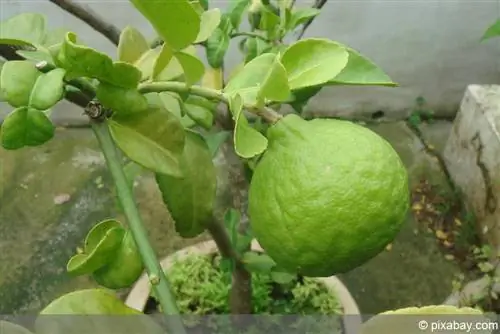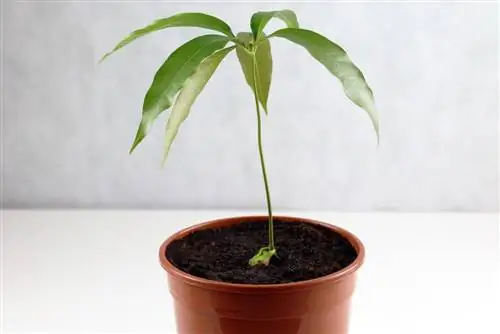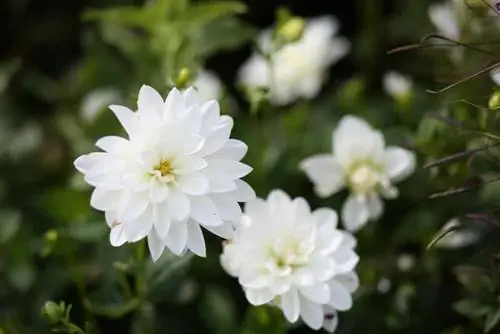- Author admin [email protected].
- Public 2023-12-17 03:39.
- Last modified 2025-01-24 12:45.
A few years ago, everyone was talking about stevia as a sweetener and sugar substitute. However, the hype has now died down - not least because stevia was officially approved as a food additive in 2011. The sweet substance is obtained from the leaves of Stevia rebaudiana, a plant that comes from the subtropics but can also be grown quite well here.
Art
Stevia or Stevia rebaudiana, its biological name, belongs to the Stevia genus and the Asteraceae family. Alternative German names are honey herb, honey cress, sweet leaf or sweet herb. It is a perennial, herbaceous plant that can reach a height of 70 to 100 centimeters. She loves the warmth and cannot tolerate temperatures and five degrees Celsius. As a result, it is not winter hardy. It originally comes from the border area between Paraguay and Brazil, i.e. from the subtropics. The natives there have been using its leaves as a sweetener for centuries. Its ingredients, the steviosides, are 150 to 300 times more sweet than beet sugar. At the same time, they have an extremely low calorific value. In contrast to other sweeteners, stevia is temperature stable, so it can also be used for baking and cooking.
Sowing
If you want to grow stevia plants, you have two options. Either he plants young plants or he gets stevia seeds and sows them. Seeds are available in the herb sections of garden stores. The best time to sow seeds is April. You have to know that stevia plants are light-tolerant. So they must not be completely covered with earth. This is how I go about sowing:
- Fill flat seed tray with potting soil
- Press the seeds in very lightly
- pour water well
- Place the seed tray on a windowsill on the sunny side
- maintain a minimum temperature of 22 degrees Celsius
If the external conditions are right, the first germs or seedlings appear about ten days after sowing. These must then be pricked out before they are planted outdoors or in a pot.
Floor
No matter whether the stevia plant is grown in an outdoor bed or in a plant pot - the soil should always be a balanced mix of loamy and sandy parts. On the one hand, it must be able to store water well, but on the other hand, it must not contribute to waterlogging. Although Stevia rebaudiana requires a lot of water, the plant cannot tolerate waterlogging at all. The nutrient content in the soil may be very low. Too many nutrients often lead to the plant contracting fungal diseases. In principle, conventional garden soil without much humus is sufficient, which can be mixed with a little sand if necessary.
Fertilize
Great restraint is required when fertilizing the stevia plant. Too much fertilizer can make them very susceptible to fungal diseases. But of course this plant also needs to be supplied with nutrients. It is therefore best to mix compost or horn shavings into the soil at least once a year. It is also possible to give a mineral fertilizer with a relatively low nitrogen content.
Harvest
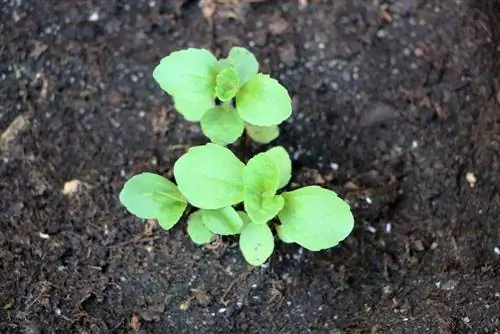
Only the leaves of the stevia plant are harvested. Normally this can be done in September of each year. The leaves are cut off at the petiole with a sharp knife or secateurs. They can be used fresh or dried in the oven at 50 degrees Celsius. If you have a larger quantity, we recommend freezing the leaves. This is also possible without any problems. Both drying and freezing preserve the leaves and ensure they can be used for longer.
Pouring
Stevia rebaudiana is an extremely thirsty plant that does not cope well with drought. There is therefore no way around regular watering. The soil in the root area should always be slightly moist, but definitely not soaking wet. Under no circumstances should it dry out - especially not over a longer period of time. Always water in the area of the roots and never from above over the leaves.
Diseases and pests
Basically, Stevia rebaudiana is a very robust, resilient plant that is not susceptible to diseases. However, the location conditions and care must be right for this to happen. If the nutrient content in the soil is too high or the soil is too wet, there is a risk that the plant will catch fungal diseases. The most common are powdery mildew, collar rot, rust, black spot, damping-off and wilt. If the plant is affected, biological remedies from specialist retailers can help. Stevia is also loved by snails, worms and aphids.
Planting
Stevia plants can be cultivated both in a plant pot and in a bed. However, planting outdoors should only take place when the temperatures no longer fall below five degrees Celsius. This usually happens in late spring or May. To do this, a planting hole must be dug into which the root ball fits easily. Since Stevia rebaudiana is a shallow-rooted plant, it doesn't have to be particularly deep. If several stevia plants are planted, there must be a minimum distance of 30 centimeters between them. When planting in a plant pot or a planter, a diameter of 20 to 30 centimeters is required. After planting, water well immediately.
Legal
Strictly speaking, the cultivation of the stevia plant as food is not permitted in Germany and most other countries in the European Union (EU). Although its ingredients are now classified as harmless and are therefore approved as food additives throughout the EU, this does not apply to the plant itself. Officially, it can only be grown as an ornamental plant in the garden or in the field. Anyone who buys stevia young plants from a nursery or garden center will often find that the leaves are not suitable for consumption. Of course that's not true. This is purely a matter of legal protection. Anyone who uses stevia leaves to sweeten dishes does not have to fear legal prosecution. They just may not be put into circulation.
Cut
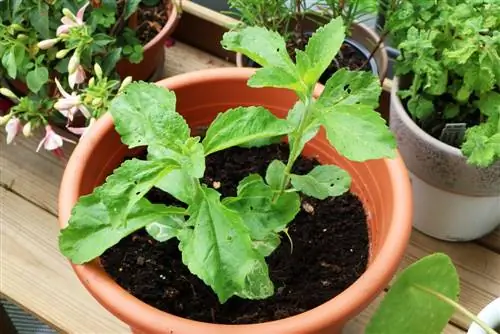
If the stevia plant is cut back regularly, this basically promotes its growth and, above all, contributes to the development of many new leaves. Pruning can be done between May and the end of July. From August onwards it no longer makes sense because the plant simply stops growing.
Location
As already mentioned, stevia plants love sun and light. In order to thrive, they absolutely need it to be warm. Therefore, a location that is as sunny as possible is mandatory. This applies to cultivation outdoors as well as in the apartment or on the terrace. If necessary, a partially shaded location is also possible, but only if it doesn't get too cold there. The right location is a very important point if stevia cultivation is to be successful. It is also important to remember that the plant can grow up to one meter high and be very bushy. It should therefore be able to develop freely in all directions.
Tip:
Greenhouses and winter gardens are perfect for cultivating stevia plants. If the temperatures there do not fall below 18 degrees Celsius all year round, they can stay there throughout the winter.
Wintering
The stevia plant is extremely robust and relatively undemanding. However, she cannot cope with the cold at all. It definitely wouldn't survive a winter outside. And even when cultivated in the apartment, overwintering must take place. If the plant has spent the summer outdoors, it must be carefully dug up to overwinter and then planted in a pot. It can be overwintered light or dark. If the winter is bright, the shoots will sprout sooner and usually more strongly. The ideal wintering temperature is 13 degrees Celsius. During wintering, watering can be limited to a small amount of water per month.

